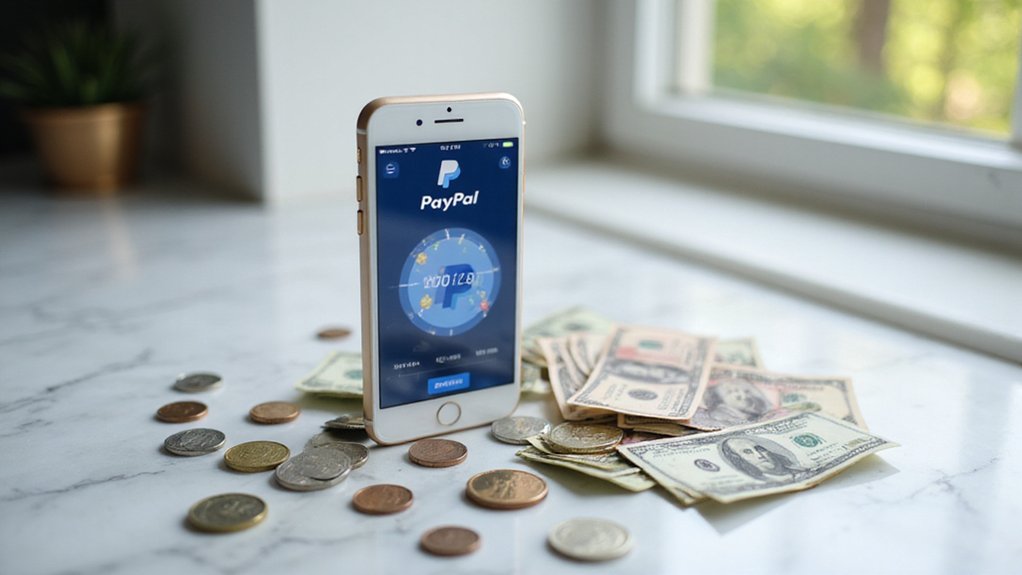Securing free cryptocurrency doesn’t require elaborate schemes—five legitimate methods stand ready. Crypto faucets dispense micropayments for completing simple tasks, while educational platforms like Coinbase Earn reward learning with tokens. The play-to-earn sector converts gaming prowess into transferable assets, as bounty programs compensate specialized skills. Meanwhile, airdrops and passive income strategies (staking yields 3-20%+ APY) provide lower-effort alternatives. These approaches—ranging from pedagogical to recreational—offer entry points without capital requirements for the crypto-curious.

For those seeking lower-friction entry points, crypto faucets dispense micropayments in exchange for completing rudimentary tasks like solving captchas or viewing advertisements.
While individually modest—one might earn mere fractions of tokens through platforms like Cointiply—these risk-free accumulation vehicles can serve as educational on-ramps for beginners still finding their footing in cryptocurrency markets.
Educational platforms have similarly embraced token incentives, with services such as Coinbase Earn and BitDegree rewarding users for completing courses about specific protocols.
The quid pro quo arrangement—knowledge acquisition paired with token distribution—creates a mutually beneficial relationship between projects seeking informed users and individuals exploring blockchain fundamentals.
Learn-to-earn models create symbiotic ecosystems where knowledge acquisition directly translates to token rewards.
Gaming enthusiasts might gravitate toward the burgeoning play-to-earn sector, where NFT-based games like Axie Infinity pioneered models rewarding gameplay with convertible tokens.
The GameFi explosion has subsequently yielded numerous alternatives, including movement-based applications rewarding physical activity.
For participants possessing specialized skills, bounty programs offer compensation for completing marketing, development, or community-building tasks.
Passive income seekers might explore staking or yield farming, which generate returns ranging from conservative (3% APY) to speculative (20%+). These methods involve locking up cryptocurrency to support network operations and earn rewards with relatively low risk compared to trading.
These methods, alongside cashback services like Lolli and attention-economy platforms like Brave Browser, constitute a diversified portfolio approach to accumulating cryptocurrency without direct purchase—though tax implications universally apply, regardless of acquisition method.
Airdrops have become increasingly significant in the cryptocurrency ecosystem, with projects distributing over $15 billion in tokens during 2024 alone to build awareness and community engagement. Users can find legitimate airdrops by monitoring crypto-related websites and engaging with blockchain projects through their social media channels.
Frequently Asked Questions
Is Free Crypto Actually Legitimate or Just Scams?
Free cryptocurrency exists in both legitimate and fraudulent forms.
Legitimate methods include staking rewards, promotional airdrops from established projects, and “learn-to-earn” educational initiatives.
Conversely, the crypto landscape teems with sophisticated scams—particularly on social media, where nearly half of crypto fraud originates.
Regulatory bodies like the DFPI track these schemes, while Chainalysis reports distinguish illicit activities from valid transactions.
The discerning investor must navigate this duality with cautious optimism and robust due diligence.
How Much Free Crypto Can I Realistically Earn?
Realistic earnings from “free” crypto vary substantially—a financial truism that enthusiasts conveniently understate.
Most legitimate methods yield modest sums: $5-$50 from airdrops, single-digit dollars from educational rewards, and perhaps $20-$100 from exchange sign-ups annually.
Mining via consumer hardware often proves economically quixotic¹, while staking returns depend entirely on capital deployed.
The aggregate sum? Perhaps a few hundred dollars annually for dedicated participants—hardly life-changing, but not entirely inconsequential.
¹Especially after factoring electricity costs and hardware depreciation.
Will Free Crypto Affect My Tax Obligations?
Free crypto absolutely impacts tax obligations.
The IRS classifies “free” crypto from airdrops, staking, mining, play-to-earn activities, and referral bonuses as taxable ordinary income based on fair market value upon receipt—regardless of whether it’s sold.
Additionally, recipients must report these transactions on Form 1040, potentially triggering Schedule D and Form 8949 requirements.
The irony? Even “free” assets carry immediate tax consequences, creating situations where taxpayers owe real dollars on virtual assets they haven’t converted to fiat.
Are Crypto Airdrops Safe for My Wallet Security?
Crypto airdrops present a mixed security proposition.
While legitimate distributions can be received safely, they often serve as vectors for sophisticated attacks—phishing schemes, dusting attacks, and wallet vulnerabilities being particularly prevalent concerns.
Prudent participants employ dedicated wallets for airdrop interactions, conduct extensive due diligence on projects, and remain skeptical of “free money” propositions (which, as financial history repeatedly demonstrates, rarely materialize without attendant risks).
Two-factor authentication and regular security audits remain non-negotiable precautions.
Can I Convert Small Amounts of Free Crypto to Fiat?
Yes, converting small amounts of free crypto to fiat is possible, though the economics can be questionable.
Centralized exchanges typically impose minimum withdrawal thresholds that may exceed airdrop values, while DEXs offer flexibility but with higher gas fees that could eviscerate meager holdings.
Peer-to-peer platforms present viable alternatives, albeit with their own security considerations.
Mobile wallet integrations like Trust Wallet with MoonPay functionality might offer the most practical solution—assuming, of course, that verification requirements don’t overwhelm the endeavor’s modest potential returns.









